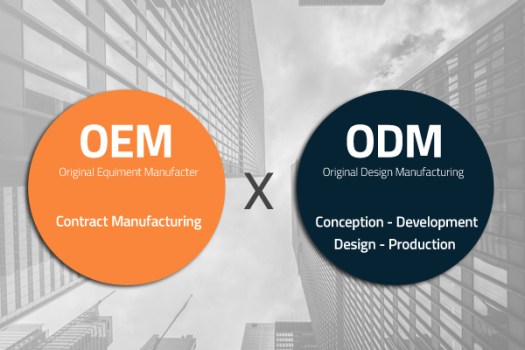OEM ODM cosmetic manufacturer
A step beyond OEM is Contract Manufacturing (CM). While an OEM may offer products to be customized or may otherwise lead and aid in the product design stage, a CM is just that – a manufacturer for hire.
If you run your business as a CM, clients approach you with their product specs and all you are required to do is produce the product. The client retains all IP rights but, in return, must provide all design requirements.
Some examples of an OEM business
One of the most well-known examples of the OEM model is Apple’s relationship with Foxconn. Apple is a multinational company with huge Research & Development resources, but its manufacturing component has some lacks.
Instead, Apple outsources its manufacturing to the Chinese company Foxconn which then builds products such as the iPhone. Apple retains its IP and receives a high-quality manufactured product. In addition, Apple also frequently engages other OEMs to produce sub-components that are then sent to Foxconn
ODM explained in detail
OEM counterparts work differently from Original Design Manufacturers in that they typically do a lot of the product design work in-house, and in a sense let their products for other businesses (clients) to sell.
Companies will often use ODMs as either a route to get an idea to market very quickly, with less R&D cost, or because they observe an opportunity in the ODM’s line of products and decide to approach the ODM to lease some of them. In these cases, the products are truely the ODM’s, and they have simply been altered in some way to adapt the brand that wishes to sell them, sometimes slightly customized in other ways but usually we can call it as rebranded. This is also known as white label manufacturing.

This can be noted that not all ODMs operate exclusively as white label manufacturers. Some offer a typical product service for clients having great ideas but lack the resources to design them.
As a sample, if a client had an idea for a new footwear item but could not design it on its own, their team might approach an ODM, almost like pitching a new and smart business idea. The ODM would manufacture it to be sold as a private label product, if accepted. In this case, most of the IP rights remain with the ODM.
The ODM’s customer follows this procedure: Product ideation, Spots a new market opportunity for their brand. Tasks of the ODM are as follows: Research & Development, Product testing, Product manufacturing, white or private label offerings
As we’ve hinted, you can get either of the above from an ODM. In both cases, the ODM does most of the product progress activities and maintains the majority of IP rights. Altogether, it is their product.
When clients want to take advantage of a market opportunity quickly without minimal forthcoming investment, they may opt to buy white label products that are more ready for market or less urgent. However, depending on how many businesses in their area also purchase the same white label product, their product may look like a copy of some of their rivals.
If a client feels they have a little extra time to ‘get it right’, as it were, they might choose the more exclusive private label option and with the added advantage of exclusivity opt for an extra level of customization.
Of course, if they really want complicated customization, they may look instead to an OEM instead of an ODM.

Free consultation in this business
Get Free Marketing & Branding Consultation from Us. We Have the Experience in Dealing with brands world-wide. We sincerely welcome people from all over the world to do business with us and become our friends!
If you need to get in contact with us, kindly feel free to WhatsApp at: +*********** or alternatively can email us at: ***** @***.com